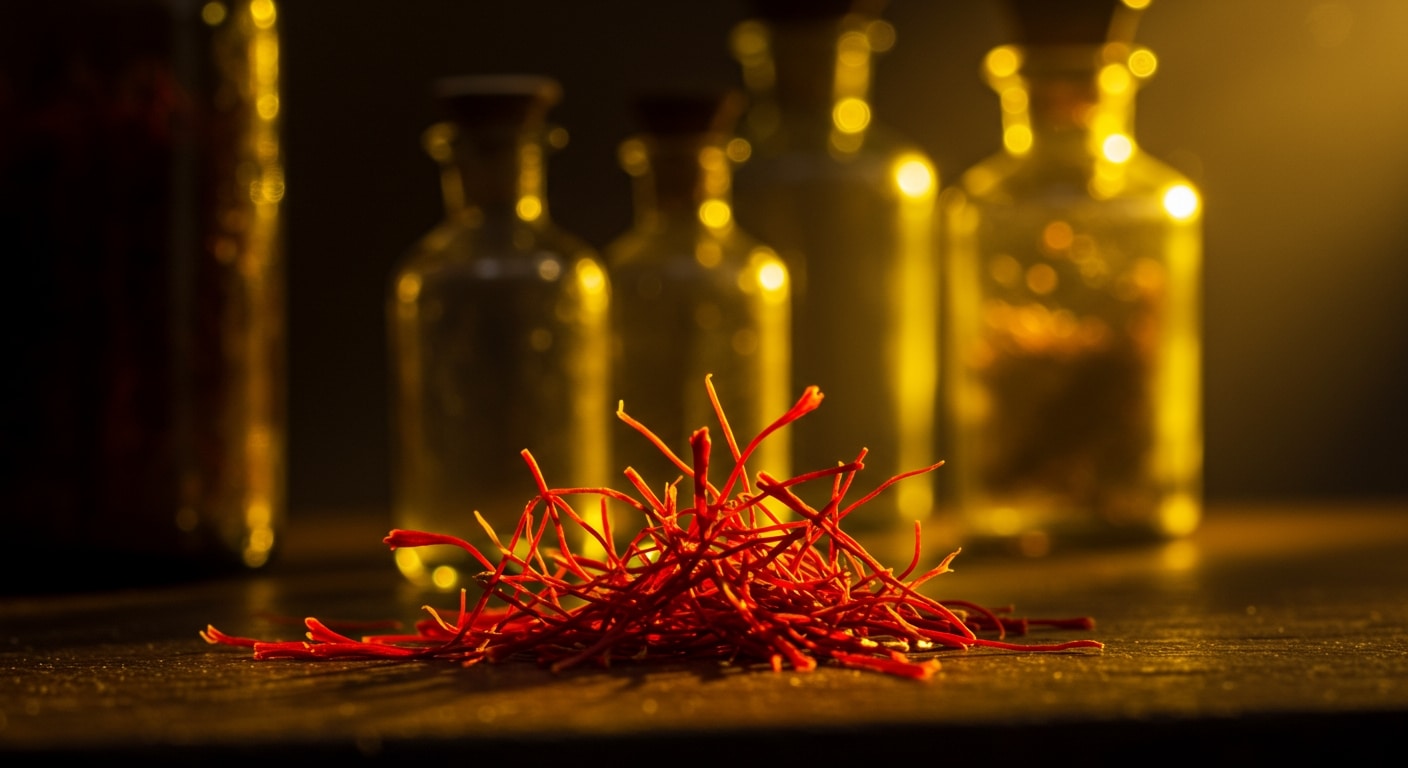
Saffron and Breast Cancer: What the Lab Studies Really Show
Saffron and Breast Cancer: What the Lab Studies Really Show
Prefer the citation‑first version? Read the short study summary (DOI):
Key takeaways
- What it is: A 2025 review pulled together 44 lab and animal studies on saffron (Crocus sativus) and its natural parts (crocin, crocetin, safranal, picrocrocin).
- What they saw: Cancer cells often self-destructed (apoptosis) and slowed down copying (cell-cycle arrest). In animals, tumors often grew more slowly; one mouse model had fewer lung spots (less spread).
- What we don’t know: No human clinical trials yet—so no proven dose, safety, or benefit for people.
- Bottom line: Interesting early science. Not a treatment. Talk to your oncology team before using any supplement.
What is saffron?
Saffron is the red stigma from the saffron crocus plant, Crocus sativus. Beyond cooking, researchers study saffron’s natural compounds: crocin and crocetin (colorful carotenoid-type molecules), safranal (aroma), and picrocrocin (bitterness).
What did the review look at?
The authors searched medical databases and included 44 preclinical studies—cell studies (in‑vitro) and animal studies (in‑vivo). Because methods and doses were different, they didn’t combine results into one number. Instead, they looked for patterns across studies.
What the labs and animals showed
- Apoptosis ↑ (self‑destruct): Crocin and crocetin often turned on the cell’s cleanup program so damaged cells died.
- Cell‑cycle arrest: Cells paused at key checkpoints, so fewer new cancer cells were made.
- Inflammation & invasion signals ↓: Some studies showed lower inflammatory markers and lower MMP activity (enzymes that help tumors invade).
- Animal hints: In several mouse/rat models, tumors grew more slowly; in one mouse study there were fewer lung metastases.
These are mechanistic clues—they help explain how saffron might work in a lab setting. They do not prove it helps people with cancer.
What we don’t know (yet)
- No human trials: We don’t know if saffron helps patients, or what dose/form would matter.
- Quality varies: Not all animal studies reported blinding or randomization, which can inflate results.
- Supplements ≠ food spice: Concentrated extracts aren’t the same as cooking amounts.
Safety note
If you’re in treatment, ask your oncology team before trying supplements. Even natural products can interact with medicines, and quality varies a lot between brands.
Bottom line
Saffron and its main compounds show encouraging signals in labs and animal models. That’s a reason to do good clinical trials—not a reason to self‑treat. We’ll update this page as human research appears.
Sources & further reading
Read the short study summary with DOI: Safron and Cancer
Quick FAQ
Q: Is saffron proven to treat breast cancer?
A: No. Current evidence comes from cells and animals. Human clinical trials are still needed.
Q: Which saffron compounds are studied most?
A: Mainly crocin, crocetin, and safranal.
Q: Can I take saffron during chemotherapy?
A: Don’t start supplements without your oncology team’s approval. Interactions are possible.
Q: What dose should someone take?
A: There is no proven dose for treating breast cancer. Lab doses don’t translate to people.
Masterful Display
Each and everyone of our products are deeply considered, labored over, and improved upon time and time again. We invite you to experience the difference of our carefully crafted small batches of herbal support items. Whether it be our tea line, produced for a delightful experience, or our tincture blends and extracts, we have what you need.

